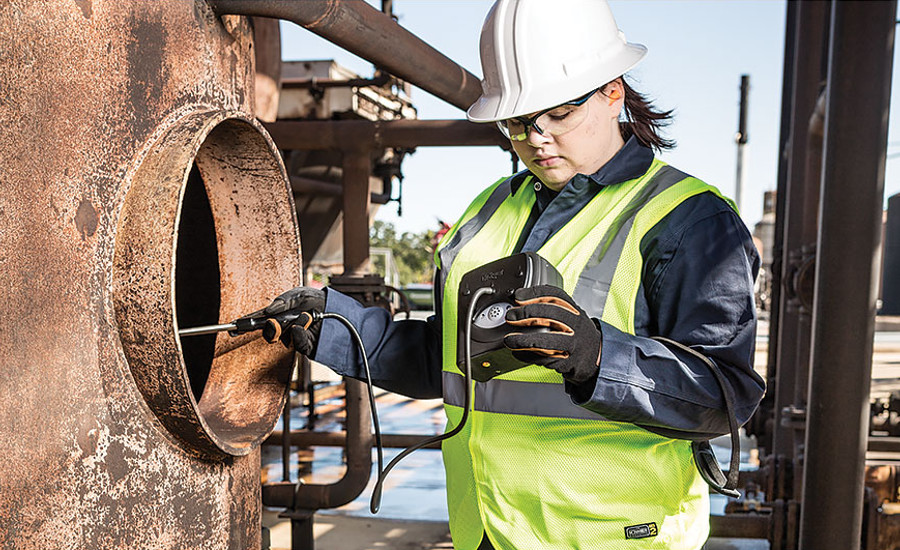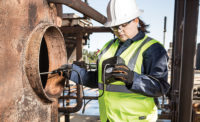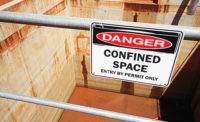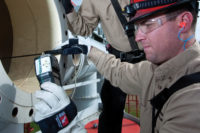Working in confined spaces presents a unique and dangerous challenge of combatting the unseen; oxygen deficiency, poisonous or explosive, hazardous substances are among the most frequent causes of accidents associated with this line of work in confined spaces and containers. From 2005-2009, the Bureau of Labor Statistics reported nearly two deaths per week, or roughly 96 per year, could be attributed to confined space, with about 61 percent occurring during construction repair or cleaning activities.
With conditions subject to change in a moment’s notice, taking steps to protect against life-threatening dangers should always be a top priority in confined spaces. Performing a thorough clearance measurement is a demanding — yet crucial — task that dictates the safety environment, and should not be taken lightly. To help guide you along your road to enhanced safety, outlined below are several best practices based on frequently asked questions.
When should I perform a clearance measurement?
Conduct clearance measurements immediately before operations begin. Environmental factors such as temperature and air flow can change the atmosphere, causing readings to fluctuate. One shift’s measurement taken at 7 a.m. is not representative of the conditions when work operations commence for another shift at 4 p.m. New clearance measurements must be taken immediately to account for the nine hours of changing temperatures and ventilation patterns, depicting the accurate readings of present conditions.
What’s the importance of zero-point adjustment?
When performing clearance measurements, it’s crucial to determine the reference point of the gas detector by calibrating the zero-point. The zero-point ensures that the indicated values correspond to the actual existing gas concentrations. In order to determine that the actual zero-point has been found, calibrate equipment in an environment where the hazardous substance is not present, such as fresh air environments. With every scientific test, no matter the field, a control group, which serves as a starting point of reference, permits for the comparison of results to show any contrasting changes. The zero-point calibration acts as such, allowing workers to identify the presence, or lack thereof, of different gas concentrations.
Where do I measure/take the sample?
When it comes to measuring samples, there are four things to keep in mind: the physical properties of gases, and the type and shape, temperature and ventilation patterns of the confined space.
Know the differences between light and heavy gases. Clearance measurement experts must have a strong working knowledge of hazardous substances’ properties, as they play a role in where measurements should be taken. For example, if a sample is pulled from the top of the confined space and hydrogen sulfide (H2S) is detected, the sample may not be entirely reliable. H2S has a molar mass of 34 g/mol, which is significantly heavier than that of air (29 g/mol). As a result, H2S sinks to the bottom of a space, where its concentration would be greatest. Identifying a presence at the top of the confined space says immediate danger and appropriate actions should be taken.
Light gases quickly mix with air and rise to the top. As a result, any measurements in open atmospheres should be performed close to the leak, and increases in concentration should appear in the highest points of the confined space. Heavy gases, on the other hand, should sink and flow like liquids, pass obstacles or stick to them. They barely mix with air like light gases do, so their samples should always be taken at the lowest points of the confined space.
Determine the type/shape of the confined space: In an ideal scenario, each confined space area would be in an “even” or level position. This isn’t always the case, and a container may be placed on an inclined surface, making the highest point in the corner positioned toward the top of the inclined surface. Thus, entry may be nearer to where the heavy gases have accumulated.
Take tabs on temperatures. All matter is made up of atoms and molecules that are constantly moving. When heat is added to a substance, such as a gas, the molecules and atoms vibrate faster. As the gas molecules begin to move faster, the speed of diffusion increases. If the sun has been shining on a tank for hours, there’s a good chance the clearance measurement taken at dawn no longer reflects the current readings due to the increase in diffusion.
Vet the ventilation. Air currents change the position and concentration of air clouds, and often times, the way a confined space is ventilated can affect readings. Containers cannot always be separated from pipelines, or there may be leaks in the tanks that must be accounted.
How do I safely conduct the measurement for an accurate reading?
People often question why they can’t just use the carrying strap of their device to lower the device into the confined space for a reading. Although this seems like a simple fix, it’s not a safe or recommended way to conduct the measurement. Lowering the device into the container this way not only obscures the way the display is read, but it may not audibly alarm. If the measured value is slightly below the threshold value and the alarm does not sound, a worker would not be notified of the dangerous concentrations lurking below. Not only this, but measurements may be inaccurate since the measured gases, due to their molar masses, may be concentrated at a higher or lower point within the container. Clearance measurements should be conducted on-site and on-the-ground of the confined space for accurate, safe readings.
What do I need to document during clearance measurement protocols?
Just as it’s important to remain thorough in clearance measurements procedures, it’s equally as important to remain thorough in the general housekeeping protocols surrounding samples. This includes documenting:
\ The container number
\ The measuring point of the container, and whether there was more than one measuring point
\ At which time was the clearance performed
\ Under what condition was the measurement performed
\ Measured hazardous substances
\ Name of person performing measurement
\ Equipment used for clearance
Safety, regardless of job title or responsibility, should be everyone’s top priority. When working in the midst of poisonous and explosive hazards, performing clearance measurements correctly and carefully means not only keeping one’s self safe, but keeping the working environment safe, as well.
Russell Warn is the product support manager for gas detection products at Dräger. He has been in the safety industry for more than 29 years, with most of this time dedicated to gas detection product and application support.



